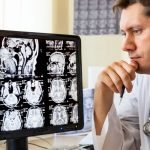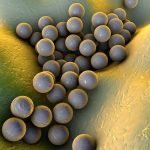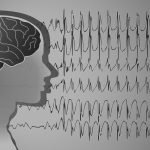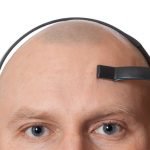Hypochlorhydria and Homocysteine in Mild Cognitive Impairment
Gene Bowman, ND
In the October issue of NDNR, we reviewed relationships between hypochlorhydria, micronutrients and gut flora pertinent to dementia. This article will extend these ideas to Alzheimer’s disease, neurocognitive testing and rationale for clinical investigations.
Alzheimer’s: Public Health Impact
Alzheimer’s disease (AD), the most common form of dementia, is a devastating neurodegenerative condition that, once identified, is largely irreversible. In the next 50 years, its prevalence is predicted to quadruple as the “baby boomer” generation enters elderly status. The characteristic pathology involves neurofibrillary tangles and Beta pleated amyloid plaques that pepper areas of the brain responsible for memory and other executive cognitive functions. This “amyloid hypothesis” is laboriously described elsewhere, but more insights into etiologic factors and potential preventive strategies are needed. Early stages of the disease need to be identified so therapies can be initiated prior to severe cognitive loss.
Identifying Early Stages
Ninety percent of the time, the pathology report at an autopsy confirms the diagnosis of probable AD made by a neurologist. We are now able to identify earlier stages of AD, called Mild Cognitive Impairment (MCI). Patients with MCI and Parkinson’s disease are at high risk for progression to AD. Diagnosis is primarily through neurocognitive testing and other studies to rule out reversible causes (hypothyroidism, vitamin B12 deficiency, neurosyphilis) and other causes of cognitive deficits (stroke, tumor, normal pressure hydrocephalus).
Early screening is necessary to identify mild cognitive deficits, which are thought to be most responsive to treatment. Neurocognitive screening challenges multiple domains, including attention and orientation, language (comprehension, repetition, naming), memory, executive function (volition, planning, purposive action, effective performance), abstract thinking and calculations. The Mini Mental Status Examination (MMSE) is the most common screen employed in primary care. Complementing this test with the Neurobehavioral Cognitive Status Examination, Wechsler Memory Scale, Clock Drawing Task and Trail Making Tests A and B is encouraged as a more comprehensive evaluation critical to early detection. In other words, by the time deficits are recognized on the MMSE, the neurodegeneration may be well on its way. These tests also provide a baseline for the patient and data comparable to reference norms by age and education.
AD and Homocysteinemia: Cause or Association?
Epidemiologic studies support the notion that homocysteinemia precedes sporadic AD, increases the risk in a continuous dose-dependent manner, and correlates with neurocognitive test scores and brain atrophy rates over time. High levels of homocysteine (HCy) are toxic to vascular endothelial cells and may be directly neurotoxic. Cell and animal models describe mechanisms of neurotoxicity, including:
- stimulating glutamatergic N-methyl D-aspartate receptors, leading to neuron death
- changes in hippocampal plasticity and a slow-onset disruption in synaptic transmission
- promotion of tau hyperphosphorylation by inhibiting protein phosphatase 2
- inducing endoplasmic reticulum stress protein (Herp), which interacts with presenilin 1 and 2 to increase beta amyloid generation.
HCy-lowering strategies in vascular disease have been largely disappointing, and it is likely that trials of B vitamins alone for AD will follow suit. These studies reduced HCy levels by roughly 12%-25% over a two-year period. The most recent trial measured cognition by neurocognitive testing and found no cognitive benefit of reducing HCy levels by about 25%; however, neither the treatment nor the placebo group showed cognitive deficits during the trial. An HCy-lowering trial in AD is underway, although to see benefit in a two-year period may require a more robust reduction in HCy, basically using B vitamins as drugs.
Lowering HCy by about 50% has improved blood-brain barrier integrity in patients with MCI over a nine-month period. CSF/plasma ratio of vitamin C is >1 in healthy elderly and >3 in cognitively impaired, favoring downward diffusion from the CSF to the plasma. This high antioxidant concentration in the CSF may be an adaptive physiologic response to the burden of oxidation in the AD brain. The “leaky” blood-brain barrier in AD appears to handicap one’s ability to concentrate antioxidants in the brain, and this significantly correlates with rate of disease progression over one year. Contribution of homocysteinemia in AD pathogenesis may be mediated partially through aggravation of the blood-brain barrier and subsequent vitamin C loss.
But what is the underlying cause here? An alternative hypothesis is that hypochlorhydria is an unidentified factor that contributes to homocysteinemia and AD.
AD and Hypochlorhydria
Inability to acidify one’s stomach can lead to elevated homocysteine, and both are common in the elderly. Another implication of hypochlorhydria is a micro flora shift. In the absence of the anti-microbial effect of normal stomach pH, exogenous and endogenous bacteria modify bile metabolism. Bacterial species identified in gastrum and jejunum of patients with hypochlorhydria include Escherichia coli, Candida albicans, enteroccocus, Lactobacillus bifidis, Bacteroides vulgatus, B. uniformis, Eubacterium lentum, E. parvum and Cornybacterium granulosum. With the exception of E. coli and C. albicans, all are associated with bile acid deconjugation. Micro flora shift secondary to hypochlorhydria is associated with fat-soluble nutrition imbalances. This remains true even though lipase is most active at pH of 3.5-4.0.
Allopaths treat mild-moderate AD with acetylcholine esterase inhibitors, and add NMDA receptor antagonists for more severe stages of probable AD. The rationale for acetylcholine esterase inhibitors is based on pathology findings of attenuated acetylcholine in AD brain tissue and that increasing levels may slow memory loss. Quantifying acetylcholine after administration of ACEI has eluded scientists thus far, and some patients have GI side effects. Maybe these ACEIs are good for hypochlorhydria. I mention acetylcholine here because it is theoretically possible that rate of reacidification of gastric contents after a bicarbonate challenge is essentially quantifying the functional capacity of the autonomic nervous system and this neurotransmitter. Acetylcholine derived from postganglion cholinergic muscarine branches of the vagus nerve directly stimulates the gastric mucosal parietal cell.
 Gene Bowman, ND is a 2004 graduate of NCNM, balancing clinical practice at NCNM Natural Health Center and clinical research at Oregon Health & Science University. His practice primarily sees neurologic, cardiovascular, GI and endocrine disorders. The clinical research training is a National Institute of Health T32-sponsored fellowship in the department of neurology at OHSU, with concentration in naturopathic medicine, neuroscience and stress. He is principle investigator of two small protocols studying folks at risk for dementia; specifically, mild cognitive impairment and Parkinson’s disease.
Gene Bowman, ND is a 2004 graduate of NCNM, balancing clinical practice at NCNM Natural Health Center and clinical research at Oregon Health & Science University. His practice primarily sees neurologic, cardiovascular, GI and endocrine disorders. The clinical research training is a National Institute of Health T32-sponsored fellowship in the department of neurology at OHSU, with concentration in naturopathic medicine, neuroscience and stress. He is principle investigator of two small protocols studying folks at risk for dementia; specifically, mild cognitive impairment and Parkinson’s disease.









